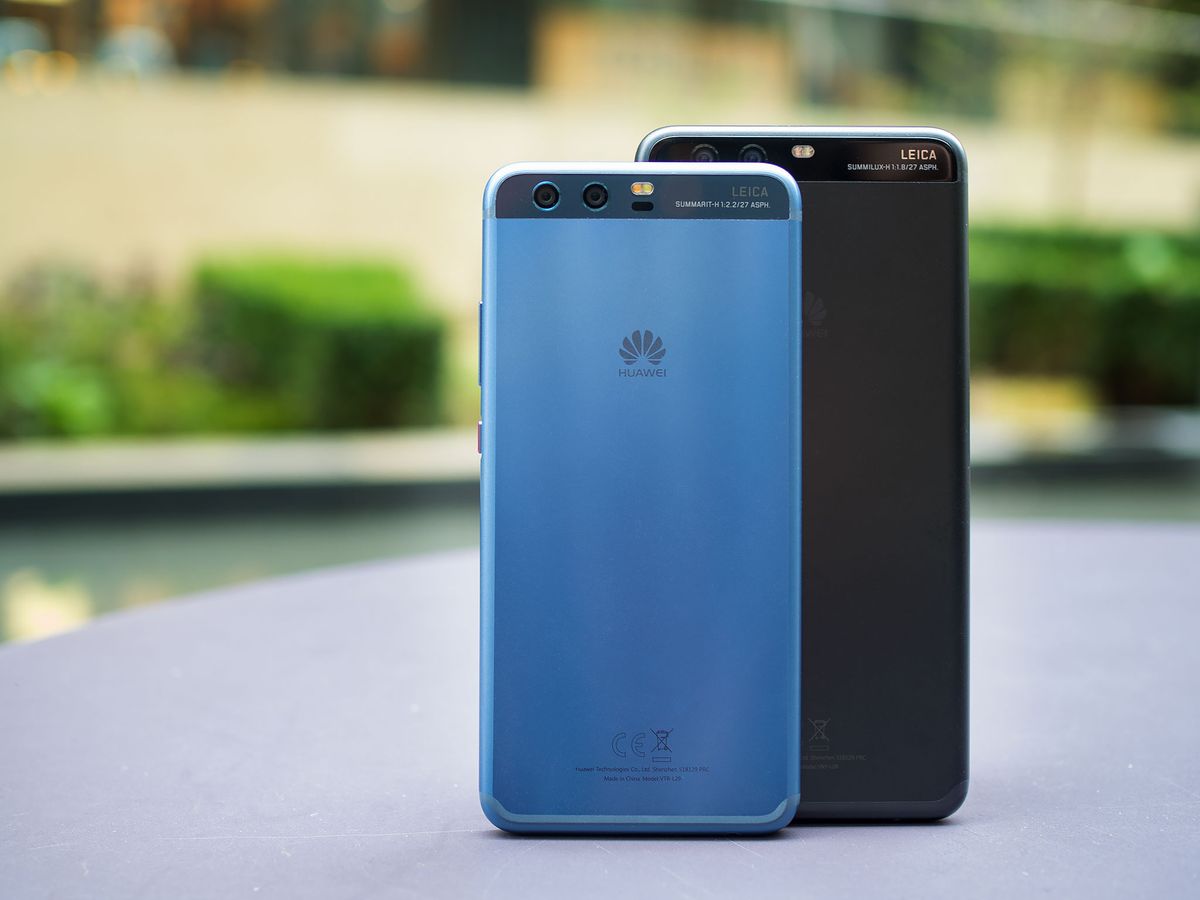The quick take
Huawei's mainstream flagships for 2017 don't necessarily look flashy — unless you opt for the exclusive "dazzling" color options — but they do deliver just about everything you could ask for in a modern Android phone. There's one big catch, though. The lack of oleophobic coating on the display may be a reason for discerning buyers to skip this round of Huawei phones.
The Good
- Solid construction and attractive design.
- Great camera performance in P10 Plus.
- All-day battery life from the P10, even more from the Plus.
- EMUI no longer a total eyesore.
The Bad
- No oleophobic coating below factory fitted screen protector.
- f/1.8 Summilux lens exclusive to P10 Plus
- No oleophobic coating below factory fitted screen protector.
- Did I mention there's no oleophobic coating below the factory fitted screen protector?
Huawei P10 series Video review
About this review
We're publishing this review after a couple of weeks of on-and-off use of the Huawei P10 (VTR-L29, dual-SIM, 4GB/64GB) in "dazzling blue" and P10 Plus (VKY-L09 single SIM, 6GB/128GB) in black on the EE and Vodafone networks in the UK, and roaming on Orange in Barcelona, Spain. Our P10 was running software build 108 until about a week into testing, when it was updated to build 112. Our P10 Plus was running build 110.
Both phones were given to us shortly after the P10 launch event in Barcelona; Huawei reps tell us both units are representative of retail P10 devices.
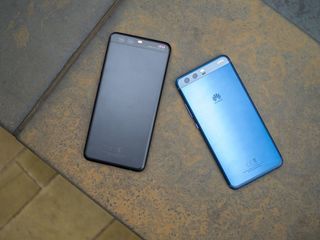
Huawei P10 series Full review
2016 was a transformative year for Huawei. The Chinese firm with a reputation for sullying its great hardware with gross software really got its act together. Throughout the year, Huawei gradually chipped away at annoyances in its EMUI interface, before overhauling everything in the much improved EMUI 5.0 release on the Mate 9. And even with slightly weird software, the P9 series sold well globally, surpassing 10 million shipped by the end of 2016. In the UK, it established a presence on all four major networks (plus Carphone Warehouse.)
This year, the challenge for Huawei is to build on all those positive developments without losing momentum — starting with two new high-end phones, the P10 and P10 Plus. Like its immediate predecessor, the P10 series offers a similar hardware package across two screen sizes, contained in a classy, understated metal shell.
The external hardware is as good as ever, and EMUI is light years ahead of where it was a year ago. So what could possibly go wrong?
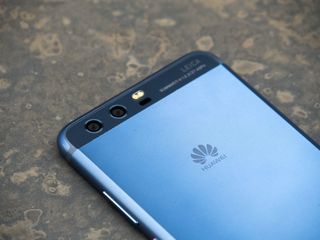
Hyper Diamond Cut
Huawei P10 series Hardware
Depending on which color and finish you pick up, the Huawei P10 lands somewhere on the spectrum between pedestrian and eye-catching. In its standard brushed, anodized aluminum finishes — which includes staple colors like silver, black and gold — the P10 has a remarkably iPhone-like appearance. (Look no further than the curved antenna lines, apparently lifted straight from Apple's phone.) As such, it inherits many of the pros and cons of that particular design. It's well-built and comfortable in the hand, but a little slippery, particularly in the 5.5-inch Plus model.
In its more extravagant "dazzling" color options, which includes the "dazzling blue" P10 I've been using for the past couple of weeks, the back plate has a truly unique look, feel and sound. Huawei calls this "hyper diamond cut" — I'd describe it as an extremely finely-cut texture etched into the aluminum — and it makes the back of the device feel unlike anything else out there. It shimmers as the phone rotates through light, and if you scratch the tip of your finger against it it sounds a little bit like a nail file. And there's a pleasing contrast between the glossy, curved side walls and the more industrial finish of the back.




The texture is supposed to be more scratch-resistant than a traditional brushed, sandblasted finish — and while that's mostly true, it certainly will chip given enough encouragement, leaving you with speckled silvery areas if it scrapes concrete or metal surfaces.
Elsewhere, there are plenty of design holdovers from last year's P-series phones, including the glass camera window up top, which sits flush with the surface of the metal. The neat red accent around the power key also adds some visual flair.
Huawei's 'hyper diamond cut' finish has its own unique look, feel and sound.
But the design as a whole is entirely more rounded than last year, in contrast to the angular P9 and Mate 9.
Like those previous models, Huawei's latest creations include a pretty decent speaker setup, combining a bottom-firing main speaker with an additional tweeter behind the earpiece, as part of a pseudo-stereo setup. The Mate 9's output sounds a touch bassier to my ears, and less tinny at high volume levels. Still, the P10 puts in a respectable performance, going louder than rivals like the Google Pixel and LG G6 with less distortion.
The P10's front face is as minimalist as any Huawei design to date, with the prominent Huawei branding of most of its other handsets having been replaced by the new front-mounted fingerprint scanner. It's a very deliberate change — one Huawei representative told me that the cleaner design might stop consumers pre-judging the phone based on its bearing an unfamiliar brand name. Another possibility is that the "hyper diamond cut" finish may have been difficult to include alongside a rear-mounted fingerprint sensor.
The sensor itself, built into the glass this time, for what that's worth, feels and functions about the same as previous Huawei fingerprint scanners — which is to say it's lightning-fast and a joy to use.
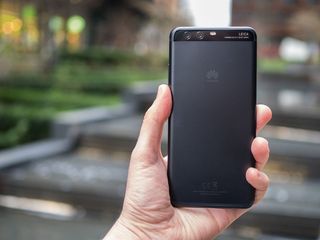


Then there's the screen. Which, on the face of it, is great. The standard P10 packs a 1080p LCD over 5.1 inches, with the Plus stepping up to Quad HD over 5.5 inches. Both offer excellent viewing angles, high brightness levels, even outdoors, and vibrant colors, with the slight blueish hue seen in earlier Huawei phones. (White balance is adjustable in the display settings menu, for what it's worth.)
But....
Why, Huawei, why?
Huawei includes a factory-fitted screen protector in the P10 as standard, just like most of its other phones. However unlike the P9 and Mate 9 — and even cheaper models like the Nova — neither P10 has an oleophobic coating on the screen. (That's the smudge-resistant layer included as standard in the vast majority of phones, without which the display quickly becomes smudgy and greasy.
We've got a whole other article on why this is an insane decision about which someone should feel bad. But briefly: For me, it's almost a deal-breaker. And for your own sanity, please keep the factory-fitted screen protector attached if you plan on picking up a P10.
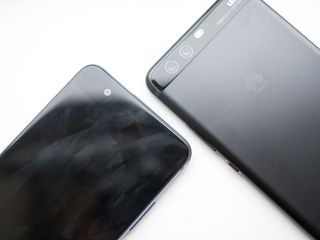
Huawei P10 and oleophobic coatings
In a bizarre move, the Huawei P10 doesn't include an oleophobic coating behind its factory-fitted screen protector.
An oleophobic coating may sound obscure and technical, but it's a staple feature of all but the cheapest smartphone screens. This nanocoating, usually applied to the glass during manufacturing, repels oils — like the kind on your face and fingers — and stops the display getting gunked up with use.
PSA: Don't remove the Huawei P10's factory-fitted screen protector
At least there are no weird compromises on the inside of this thing. Both P10s are based on the same Kirin 960 platform as the Mate 9, meaning there's plenty of performance to go around, whether it's paired with 4GB of RAM and 64GB of storage in the smaller P10, or 6GB/128GB in the Plus.
And Huawei has specifically targeted touch latency in its performance tweaks in EMUI 5.1 — a big part of what makes a phone feel fast. So between the proven horsepower of Huawei's homegrown chip and further software optimization, both phones are absolutely blazing fast. That high performance extends to gaming too, thanks to the new ARM Mali-G71 GPU.
| Category | Huawei P10 | Huawei P10 Plus |
|---|---|---|
| Display | 5.1" FHD, 2.5D glass, Corning Gorilla Glass 5 | 5.5" WQHD, 2.5D glass, Corning Gorilla Glass 5 |
| CPU | Huawei Kirin 960 (64-bit), Octa-core (4 x 2.5 GHz A72+ 4 x 1.8 GHz A53) | Huawei Kirin 960 (64-bit), Octa-core (4 x 2.5 GHz A72+ 4 x 1.8 GHz A53) |
| RAM | 4GB | 4GB, 6GB |
| Storage | 64GB | 64GB, 128GB |
| GPU | Mali G71 Octa-Core | Mali G71 Octa-Core |
| OS | Android 7.0, EMUI 5.1 | Android 7.0, EMUI 5.1 |
| Camera | Front: 8MP, F/1.9Rear: Leica Dual-Camera 2.0, 20MP Monochrome & 12MP RGB, SUMMARIT-H F/2.2, OIS | Front: 8MP AF, F/1.9Rear: Leica Dual-Camera 2.0 Pro Edition, 20MP Monochrome & 12MP RGB, SUMMILUX-H F/1.8, OIS |
| Battery | 3,200mAh, Huawei SuperCharge | 3,750mAh, Huawei SuperCharge |
| Size | Height: 145.3 mm; Width: 69.3 mm; Depth: 6.98 mm | Height: 153.5 mm; Width: 74.2 mm; Depth: 6.98 mm |
| Colors | Ceramic White, Dazzling Blue, Dazzling Gold, Prestige Gold, Graphite Black, Mystic Silver, Rose Gold, Greenery (Color availability varies by region) | Ceramic White, Dazzling Blue, Dazzling Gold, Prestige Gold, Graphite Black, Mystic Silver, Rose Gold, Greenery (Color availability varies by region) |
| Finishes | High Gloss, Hyper Diamond-Cut, Sandblast | High Gloss, Hyper Diamond-Cut, Sandblast |
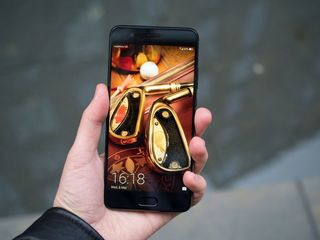
EMUI 5.1
Huawei P10 series Software
After the rebirth of EMUI on the Mate 9, Huawei didn't need to do a whole lot to translate that experience onto a smaller screen, and so the new EMIU 5.1 — still based on Android 7.0 — looks and functions much the same as before. (Albeit a little quicker thanks to the special attention given to touch responsiveness in this update.)
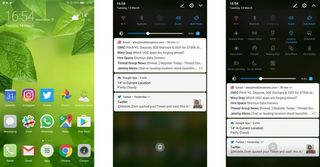
This is still a very customized version of Android, though the core of EMUI is cleaner and less cluttered than previous iterations. Android's notification center is mostly unmolested, save for Huawei's customized quick settings implementation and a separate permissions system for lock screen notifications, which can be a bit confusing. Most of Huawei's preloaded apps use the same cool blue and white hues that you'll find throughout the menus — which is smart and inoffensive, though not entirely in keeping with Android's design direction as a whole.
Chances are EMUI looks and works differently to what you're used to in an Android phone.
EMUI 5 is as customizable as ever, with Huawei's Themes app allowing you to kit the P10 out with a range of themes, some genuinely nice-looking, others decidedly vomit-inducing. Each color of P10 is preloaded with its own color theme, which is a nice touch, but there's still a weird dissonance between the embossed, over-the-top-colorful icons and backgrounds in these themes and the rest of EMUI.
While much of the focus of EMUI 5.1 has been under-the-hood tweaks, there are a couple of user-facing additions. Huawei has partnered with GoPro to include the camera maker's Quik application on the P10, giving you an easy way to conjure up highlight reels with transitions and music matched to your photos. The feature set offered here isn't all that new — HTC experimented with this type of functionality in its Zoe app years ago, and Google Photos has a similar feature, though with much less manual input. Nevertheless, it's a nice touch.
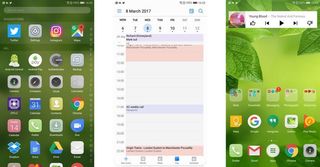
You've also got some intriguing options for changing up Android's soft keys (back, home and recent apps.) Like the Mate 9 Pro, the P10 lets you use gestures on the front-mounted fingerprint scanner to replace the standard on-screen buttons. A single tap sends you back, a long press takes you home, and a swipe gesture takes you to your recent apps. It's a decent idea in theory, but I never fully wrapped my head around this new button dynamic, and retreated to the safety on-screen keys pretty quickly. It didn't help that the swipe gesture for recent apps failed to trigger reliably every time.
So there are no massive changes from EMUI 5 to speak of, and the overall experience, in terms of both visuals and performance, boils down to that of using the Mate 9's software on a smaller display. Android purists may still be unimpressed with Huawei's customization and the many iOS influences throughout the software, but EMUI 5.1 fast, responsive and easy to tune to your own preferences.
A couple of other software nuggets from EMUI 5.1:
- While the P10 Plus comes with display (DPI) scaling options, letting you see more on screen at once, this isn't enabled on the regular P10.
- The P10 and P10 Plus both support VoLTE and Wi-Fi calling on EE in the UK, a first for Huawei, and a good indicator that future software updates may bring this to phones like the Mate 9.
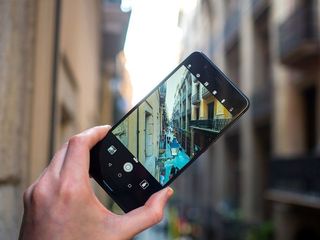
Summarit / Summilux
Huawei P10 series Cameras
We're a year into Huawei and Leica's strategic partnership, which has yielded some dramatically improved camera performance, and there are some big changes in the P10's imaging setup, in both the hardware and software.
First, both P10 models have grown a new portrait mode, which is similar in a lot of ways to the feature of the same name from the iPhone 7 Plus. The optics of Huawei's cameras are different — there's no zoom lens, for instance — so there's more heavy lifting being done in the post-processing. Huawei's camera app and Kirin ISP pair up to re-light your subject's face on the fly, smooth out blemishes and artistically defocus the background. Portrait mode also makes colors pop a little bit more, which leads to shots taking on a slightly surreal quality compared to iPhone portraits.






















Many of the same features also work with the P10's 8-megapixel selfie camera — the front facer is now Leica-certified as well, and situated behind a bright f/1.9 lens. Huawei's selfie software can detect how many people are in a shot, and defocus the background accordingly, bringing out the appropriate details in the faces of both you, your friends, and any photobombers.
The P10 Plus comes really close to the Pixel and G6 in most lighting situations.
On paper, the optics of the second-gen Leica camera setup in the smaller P10 haven't changed at all since the Mate 9. You've still got two f/2.2 Leica Summarit lenses, one housing a 12-megapixel color sensor (with optical image stabilization and 1.25-micron pixels), another packing a 20-megapixel monochrome sensor without OIS. (Alongside laser autofocus for faster focusing in the dark.)
As such, the results from the regular P10's photographic capabilities closely match the Mate 9's — taking into account the past few months' worth of software tuning, of course. You'll get legendary dynamic range thanks to the dual-sensor setup, and generally solid performance, though with some fine detail loss in challenging lighting compared to cameras like the LG G6 and Google Pixel.
The big camera hardware upgrade has been reserved for the P10 Plus, which introduces dual f/1.8 Leica Summilux lenses — significantly brighter than the smaller model's lenses, for improved low-light captures. And while I think the Pixel and G6 still pull ahead in night-time shots, the P10 Plus is really, really close, to the point where most people won't be able to tell the difference.
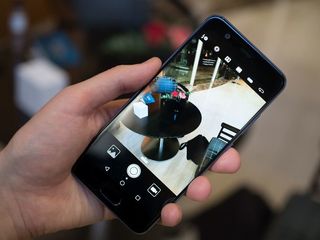
The P10 Plus takes a great camera experience and gives it an even better lens.
There are only a couple of very specific areas where I've noticed weaker performance from the P10 Plus. Firstly, in high-contrast scenes with lots of brighter and shaded areas, Huawei's camera struggles to retain color detail, with some areas of certain shots being rendered in black and white, even in full color mode.
And Huawei still isn't quite up there with the best in terms of video recording. Despite the inclusion of OIS, and a software stabilization mode, there's a decent amount of ghosting in moving shots, and fine detail is lost in shots with uneven lighting — more so than most other high-end phones.
So if photography is a priority, definitely go for the P10 Plus — it's got a dependable Auto mode for most kinds of shots, some intriguing artistic modes to play around with, and that all-important manual mode for great long exposures at night.
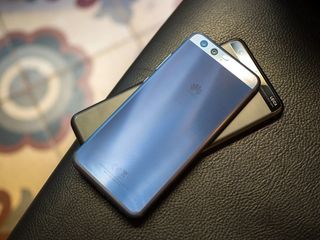
Super Charged
Huawei P10 series Battery life
Between relatively large battery capacities, homegrown processors and tight software controls for background apps, Huawei phones have always punched above their weight in terms of battery life. And I'm happy to report that the P10 and P10 Plus are no exception.
With the P10, you're getting an ample 3,200mAh cell, which is a little above average for a phone of this size, with some extra power savings coming from the use of a 1080p display. The P10 Plus steps up to a more capacious 3,750mAh cell, which is more than sufficient to offset the step up to both a 5.5-inch panel and a resolution of 2560x1440.
Even the smaller P10 delivers outstanding battery life for this type of phone.
In day-to-day use, the smaller P10 actually reminded me of the performance I got out of the Huawei-made Honor 8, in that it'd just keep going, even with relatively intensive use on LTE, often in not-so-great signal areas. Essentially, I never had to worry about not getting a full day out of the P10, though the kind of multi-day longevity I've had from the Mate 9 was outside of the phone's reach.
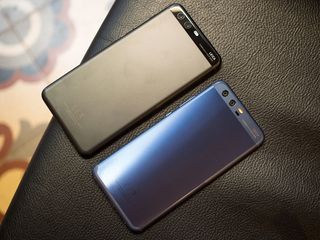
The P10 Plus followed a similar pattern, holding up well against heavy use, and sometimes leaving me with 50 percent in the tank after a day out and about. With those kind of usage patterns, I was looking at around five hours of screen-on time per charge. Again, that's a step below the Mate 9, but in a phone with a smaller battery and a higher screen resolution.
Both phones benefit from Huawei's extra-quick Super Charge technology as well, which requires a special cable as well as a plus-sized Huawei Super Charge plug. First seen on the Mate 9, Super Charge is the only charging tech I've used that rivals OnePlus's Dash Charge, powering up the P10 at up to 5A and 4.5V (or 4.5A at 5V). That means faster recharges with less heat generated compared to other quick charging methods, which use higher voltages. On both models, up to around 80 percent, you can practically watch the percentage numbers tick up.
Combining the ability to complete a meaningful recharge in around 30 minutes with great battery life in general, the Huawei P10 emerges as an excellent performer.
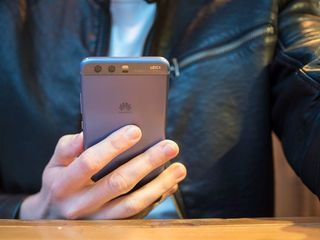
The bottom line
Should you buy the Huawei P10? Yes, but...
Personally, the whole oleophobic kerfuffle with the Huawei P10 has considerably dampened my enthusiasm for these phones. This is a core hardware feature which has been the norm in just about every flagship smartphone for the past decade. The P10 forces me to choose between two bad options: leave the screen protector on and deal with a display that feels like crappy plastic, or take it off and live in a frustrating hellscape of screen smudges.
When you're paying north of £550 for a flagship phone (either upfront or over the course of a contract), that's a choice you shouldn't have to make.
At the risk of stating the obvious, the display is the primary input and output device on a phone. It's the one thing you're constantly looking at and touching. For a company as established as Huawei to compromise it in this way defies reason.
The P10 earns itself a grudging recommendation, with a major asterisk attached.
It's pretty clear this phone is supposed to be used with its pre-fitted screen protector attached. (Which is fine, I guess... although the entire glass front isn't covered by the film.) If that's OK with you — and for many people it'll be perfectly acceptable — then great. Buy a P10 and enjoy it. You'll get a good-looking device with great performance and a fantastic camera. For others it'll be a deal-breaker. I'm somewhere in the middle, hence the grudging recommendation.
That's a shame, because the rest of the Huawei P10 is great. Really great. Were it not for my reservations over the screen, the P10 would certainly qualify as one of the best Android phones out there. And the P10 Plus comes with that extra bit of icing on the cake — a brighter lens for some amazing low-light captures, and the option to spec it out with oodles of RAM and storage.
Above all, these phones show that for all the progress Huawei has made, its products can still be derailed by one or two bad decisions.

Alex was with Android Central for over a decade, producing written and video content for the site, and served as global Executive Editor from 2016 to 2022.
